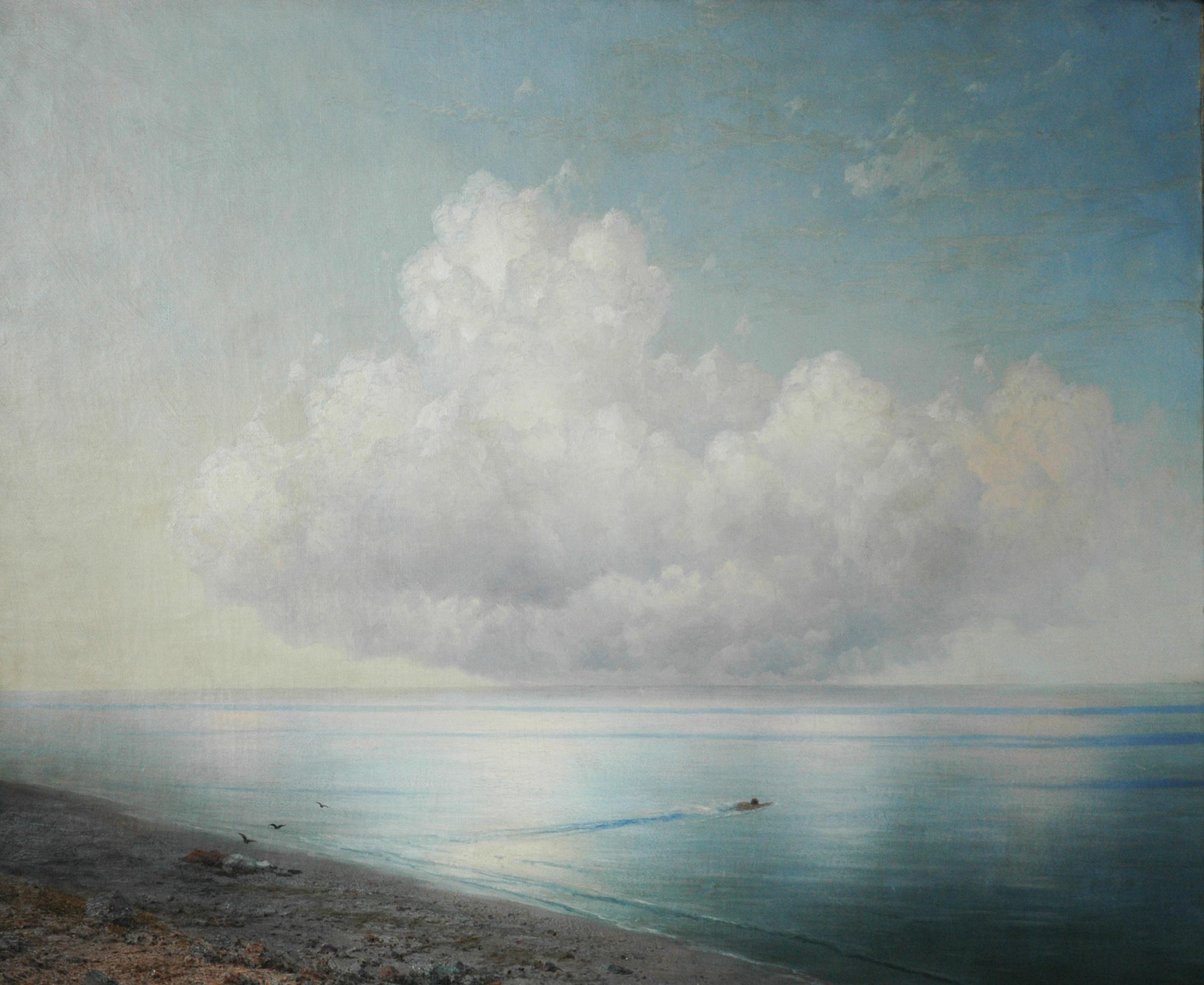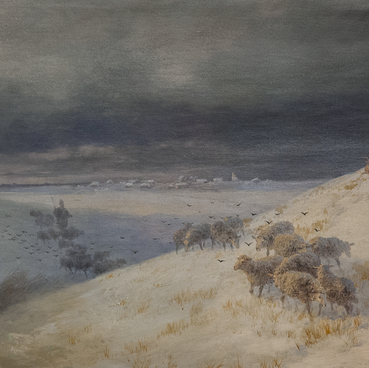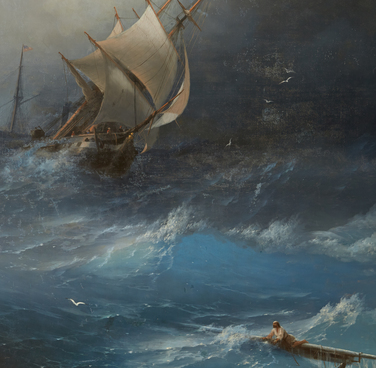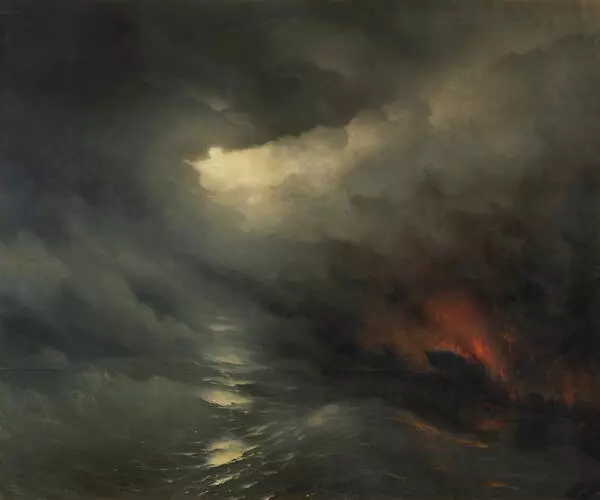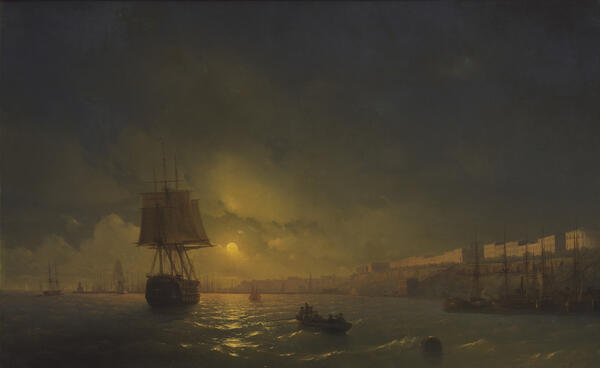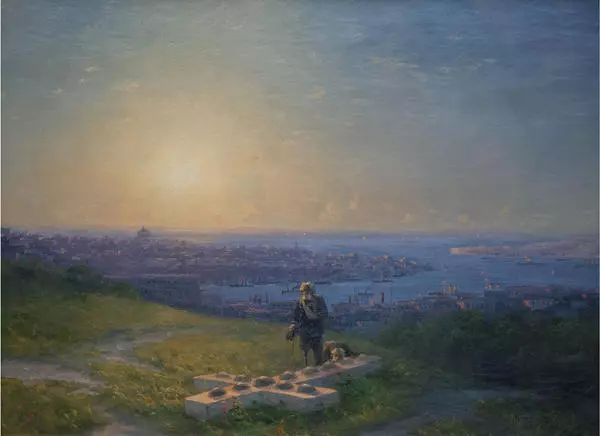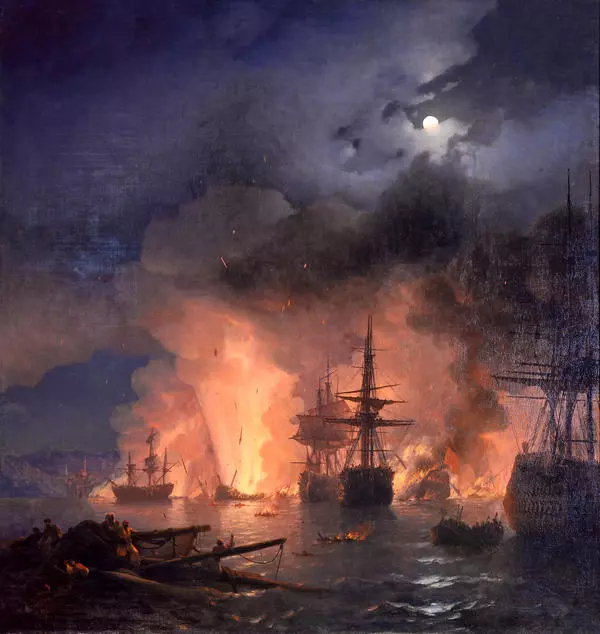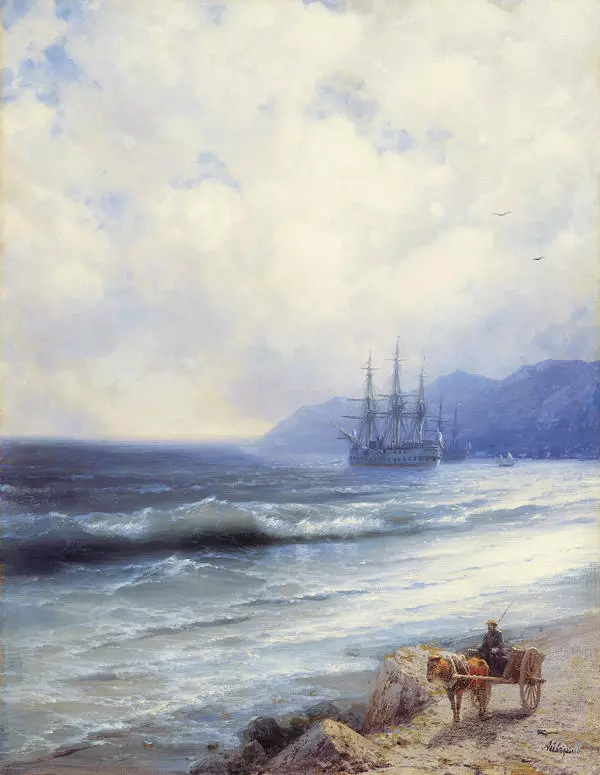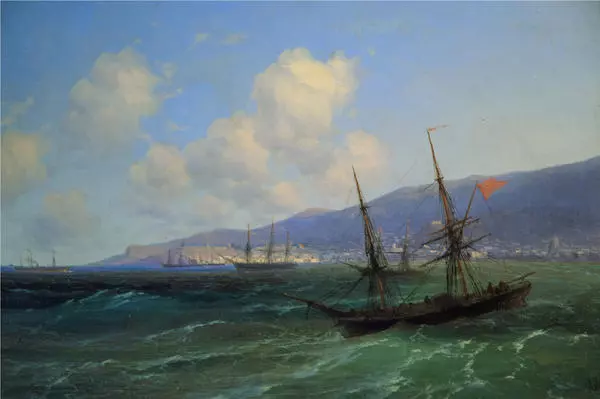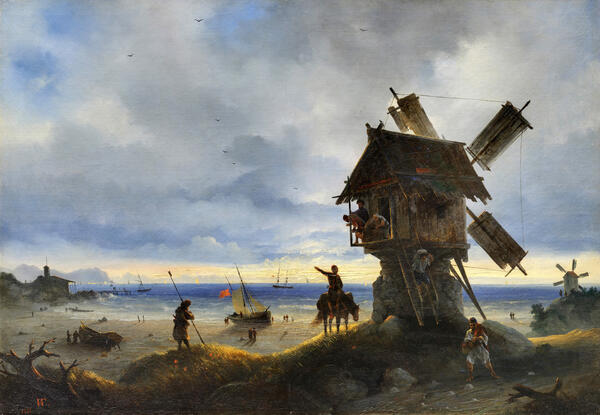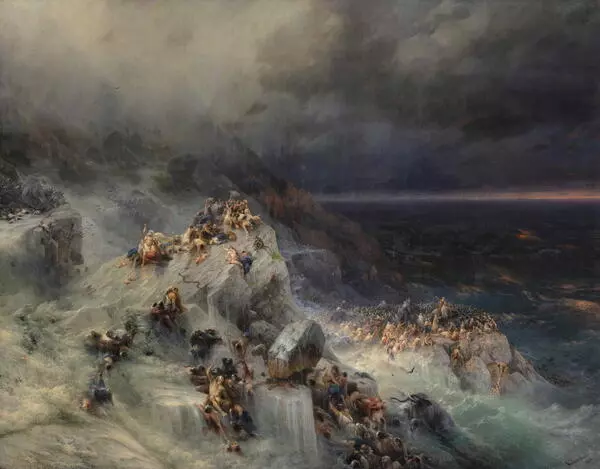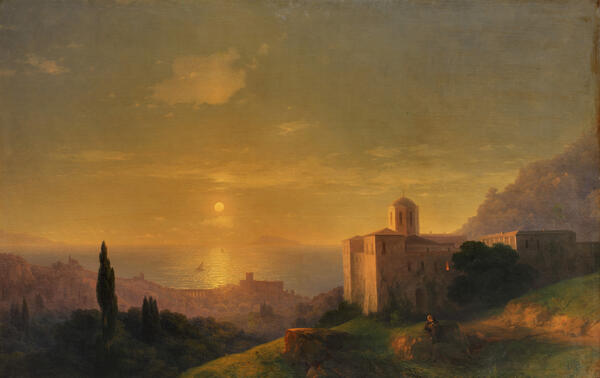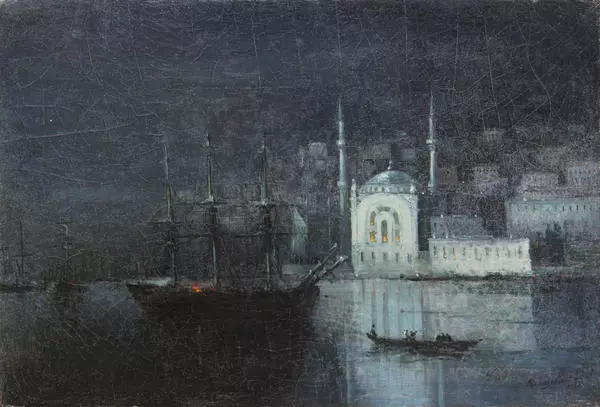The last ten years of his life Ivan Aivazovsky filled with public activity as well as fruitful creative work. In October 1889, he took part in the construction of an exhibition hall in Yalta. Almost every year he exhibited his new pictures in Russia, and the year of 1890 saw an exhibition in Paris. Within the same period, Aivazovsky was awarded the second Order of the Legion of Honour — the highest mark of distinction in France. The artist’s late pieces were full of contemplation about raison d’etre and the role of fate. He tended to see a reflection of man’s path in life in the waves and the patterns of clouds in the sky.
The artist often painted the stormy sky covered with heavy black clouds, portrayed the variety and beauty of clouds on a quiet and sunny day. He subtly perceived nature and skilfully portrayed all of its different shades. Aivazovsky created lots of versions of the clouds theme during his long life. Among them there are winter and summer skies, morning and evening skies. With time the painter developed his own techniques to show the rich shapes of cirrus, woolpack and stormy clouds. More often than not he portrayed the stormy skies. Aivazovsky was a poet of unrestrainable force of nature. He was attracted to crushing storms, gusty blasts of air-mass and rushing seas challenged by man from time immemorial.
Aivazovsky painted the picture A Bank of Clouds a year before his death. At that time he created several paintings remarkable for their clarity and palette. The picture is based on a composition of bluish and greenish colours of the sea and the grey sky. There is windless calm in the air. Yet, over the horizon there is a huge cloud forecasting a storm. Cold grey-blue shades prevail in the picture. Aivazovsky depicted with subtlety the sponginess of thick clouds hanging over the sea, their movement and pattern. Every detail in this painting points to the artist’s unfailing observance. He managed to depict the entire beauty of a sombre morning pending a thunder storm by using simple techniques.
